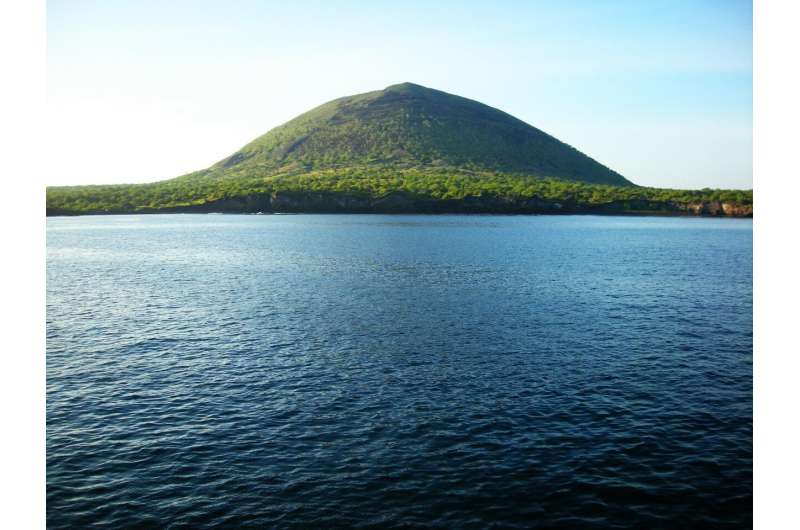Credit: Pixabay/CC0 Public Domain
A new study led by Florida Tech recommends rewilding an island in the Galapagos with tortoises and rare plants to recreate an ecosystem irreparably damaged by whalers.
The study, "Human-induced ecological cascades: extinction, restoration, and rewilding in the Galápagos highlands," is published in this week's Proceedings of the National Academy of Sciences.
Using microscopic fossils of pollen and spores found in the sediments of El Junco, a crater lake that lies at almost 2,000-feet elevation in the highlands of San Cristobal Island, researchers from Florida Tech, University of Arizona and University of Illinois Urbana-Champaign tracked the disappearance of giant tortoises from the landscape.
The island is known to have had two species of giant tortoise, one a lowland specialist and one whose shell shape suggests that it may have ventured into the highlands. It went extinct before it could be documented by science.
Prior studies showed that a fungus, Sporormiella, lived in the gut of tortoises and cattle. When dung was defecated near the lake, the spores of Sporormiella would wash into the lake and preserve in the sediments accumulating at the bottom of the lake. The changing abundance of Sporormiella before settlers introduced livestock to the islands documents the population size of giant tortoises.
After raising cores of sediment from the center of the lake, the team found abundant Sporormiella in ancient sediments, evidence that tortoises had regularly visited the lake prior to AD 1800. "We were surprised to find that by 1800, within a decade of whalers first landing on the islands, tortoises stopped visiting our rather remote hilltop lake," said team leader Mark Bush, professor of biology at Florida Tech .
The Galápagos Islands were only visited by pirates and wayward sailors prior to the 1780s. But rising demand for whale oil and overexploitation of Atlantic whale stocks forced whalers to explore the Pacific Ocean, as well. Whalers began operating around the Galápagos in the 1790s and by the early 1800s they were regularly visiting the islands.
Ships' logs show that the whalers collected an estimated 200,000 tortoises from the islands to take aboard their ships over a 70-year period. The tortoises could live for six months onboard without food or water and were a prized source of fresh meat. "We think that as tortoises were captured near the coast, it reduced competition and the need to migrate far inland," study co-author Diane Thompson of the University of Arizona said.
With the loss of tortoises, the balance of plant species growing near the lake started to change. The species of tortoise that had been migrating up to the lake is thought to have gone extinct between 1830 and 1860.
The researchers also tracked the arrival of cattle and horses in the late 1800s and their impact on the system. Two genera of shrubs, Alternanthera and Acalypha, which had thrived around the lake when the tortoises were present, went into a major population decline and ultimately went locally extinct in the 1970s.
"We recommend reintroducing the close relatives of the extinct plants and tortoise, all of which can be found on other islands in the Galapagos," said Jessica Conroy of the University of Illinois Urbana-Champaign, another study author.
Restoration of the El Junco area should emphasize exclusion of livestock, reintroduction of tortoises, and an expansion of the ongoing plantings of Miconia to also include Acalypha and Alternanthera, the authors suggest.
They advocate for this rewilding to promote habitat restoration and considering the socioeconomic value of these highland ecosystems in providing tourist experiences.
More information: Mark B. Bush et al, Human-induced ecological cascades: Extinction, restoration, and rewilding in the Galápagos highlands, Proceedings of the National Academy of Sciences (2022). DOI: 10.1073/pnas.2203752119
Journal information: Proceedings of the National Academy of Sciences
Provided by Florida Institute of Technology
























